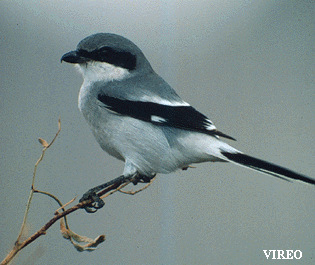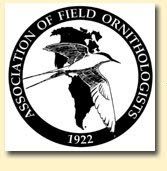Man.
_________________
Seriously (the previous lines and title being somewhat tongue-in-cheek...somewhat), I have less blogging-convenient internet access 70 miles off the coast of southernmost CA than I did 600 miles NW of Honolulu, HI. With that said, it may be that we both have to transition abit. Perhaps not. But for the moment it would seem that I won't be able to post the musings, observations, and mastications on life and lives as often via this medium on San Clemente Island as I had in the NW Island Chain of HI. There I would wake hrs earlier than others during a workday, morning being a time when I focus more accutely and generally work in a better fashion than later on, and write(type) on this forum.
It would appear at the moment that timing will be different with this gig than the previous. But, adjustments will eventually be made. So lets work together until this transition takes place into some resemblence of a routine. It will happen. It always does.
Hopefully this blog won't be a victim of its previous success during my stay at Tern I.
"It's going to be alright." - anonymous 21st century poetess
Patience is a ...., how did that go again? Patience is...; well its something I suppose.
So, I post this on the afternoon of one of my days off. I'm a little tired. The morning coffee has worn off, the brainpower is in a bit of a mellow herbal tea haze, and so the gentle musings might be gentler than we are used to. They might be non-existant.
Nevertheless, I have pictures. Plus, we need to "get the ball rolling" on this stage of this particular life's trekkings.
I believe I have somewhat explained in previous postings my current job and location. Regardless, I am newly serving as Avian Field Biologist for the San Clemente Loggerhead Shrike Monitoring Program for a private company that works on San Clemente Island, the southern-most channel island, a chain off the coast of southern California.
I should say I work at Naval Auxilliary Landing Field - San Clemente Island.
Thus, the endangered San Clemente Loggerhead Shrike (LOSH).
The highest point on San Clemente Island, Mt. Thirst, rises to 1965 feet above sea level. The mountain range is surrounded by canyons of various lengths and depths.
If it looks like a long ways down in these photos, that is due in large part to the fact that it is.
Most of the shrikes have been banded, as fledglings either captive or wild bred, from previous years. Each bird has a uniques combination of four different colored leg bands, two bands per leg. This gives the bird an identity and lineage that can be traced back. As LOSH's are sexually monomorphic, meaning both male and female bird generally look alike, the color combination data set also let us know male from female. After awhile, birds become known to the biologist. Personalities come out, and favorites are sometimes expressed from the biologists.
It is through observation that we monitor LOSH behaviours to determine several stages that are important to know at this time of year. We look for birds that are solitary; single birds that seem not to have a mate, not perching with another bird, and generally foraging by itself.
We certainly note when a bird is seen with another bird. Knowing that a pair bond has been documented, and the two individuals documented by determing colorband combination is an important stage. The PR, the pair. General courtship is most often noted when a bird is heard "begging", that would be the female, and the male brings her food.
Another stage looked for is NB, or Nest Building.
When the female is noticed to have stayed in the nest site for longer periods of time, it is assumed that the pair has reached the Incubation stage. This is also roughly calculated to an expected date after the egg-laying. The female will only occasionally leave the nest site. The male is seen bringing food toward the particular point of vegetation.
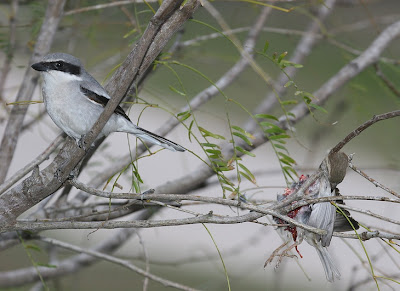
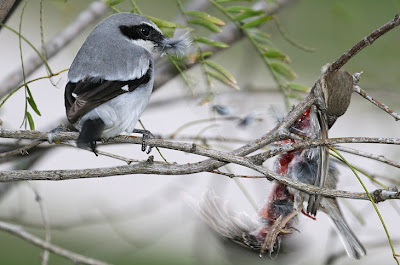
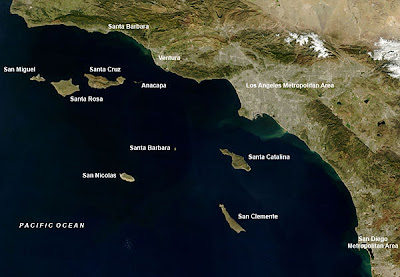 San Clemente Island is owned and operated by the United States Navy as a training facility.
San Clemente Island is owned and operated by the United States Navy as a training facility.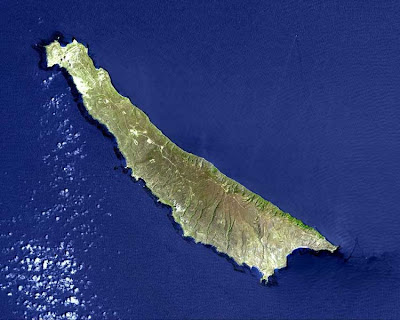 satellite image of San Clemente I.
satellite image of San Clemente I.
